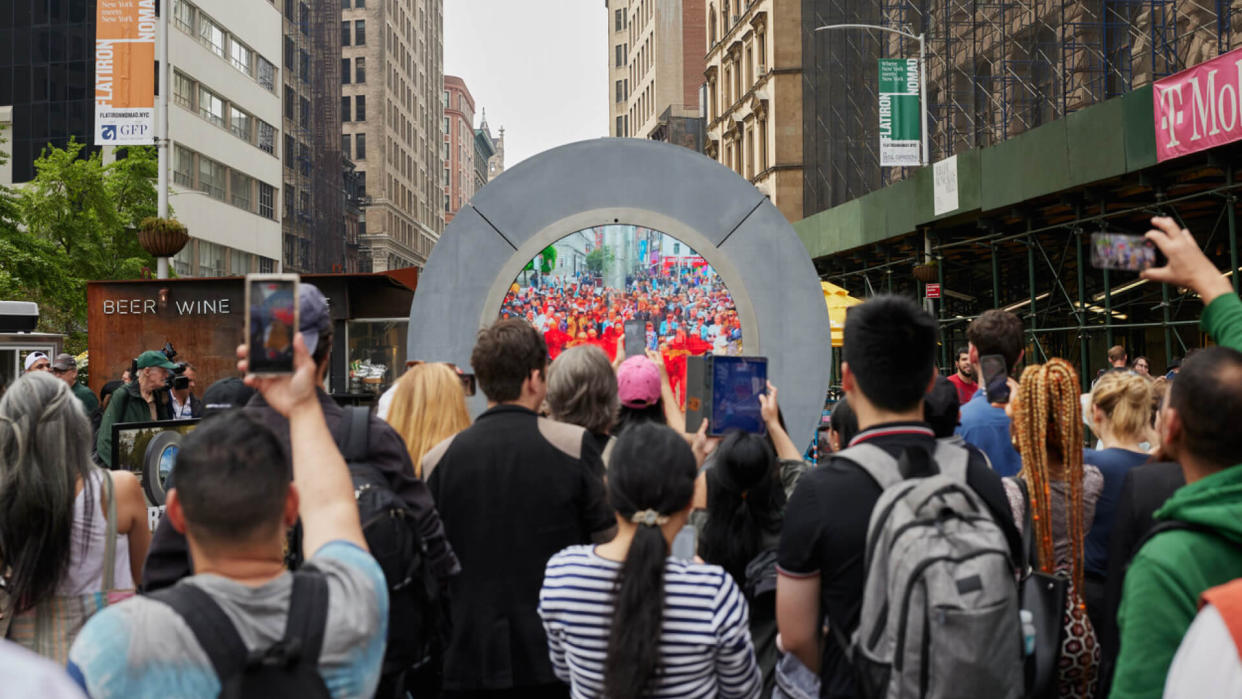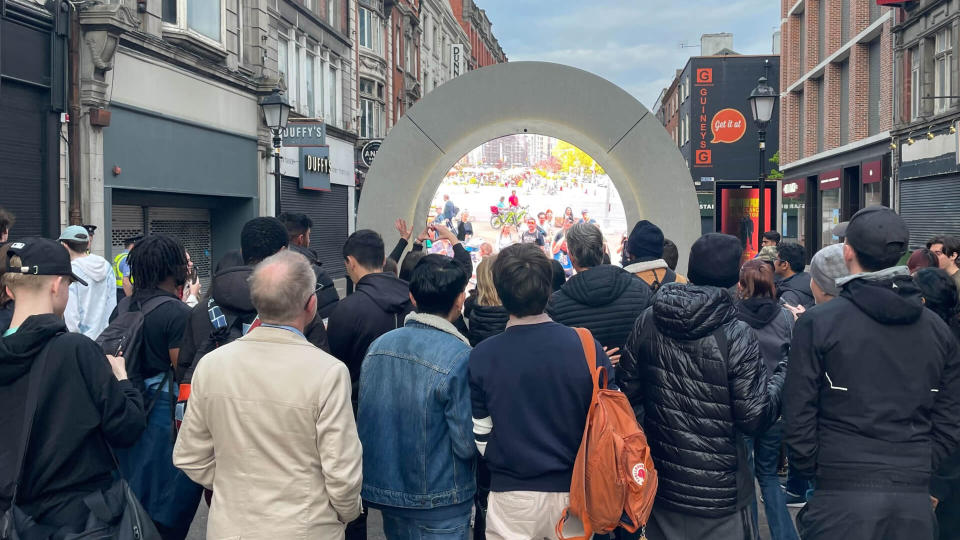The Dublin-Manhattan art portal proves why we can’t have nice things

The beauty of art is that it's deeply subjective – once it's out in the open, it's up to the world to interpret it. While conceptually it's all rather poetic, a recent art installation has proved that the art world isn't always as deep and nuanced as it seems.
Enter the Dublin-Manhattan Portal – a bizarre sculpture that links the two cities with real-time video screens. What could possibly go wrong? Turns out, just about everything. While it's refreshing to catch a break from the recent influx of AI art, the installation has spurred on cases of serial flashing and "inappropriate behaviour" – this is why we can't have nice things.

The mysterious portal manifested earlier this month, appearing in Dublin and Manhattan. Created by Lithuanian artist Benediktas Gylys, the installation is a way to connect the two countries across the Atlantic Ocean, using technology to bring communities together.
At first, it seemed that all was well. Family members were virtually reuniting, long-distance couples reconnected and there was even a report of a proposal, but of course, the pleasantries couldn't last forever. Soon the friendliness divulged into debauchery, with an influx of flashing, drug-taking and even the arrest of a woman who was removed for dancing 'provocatively' against the portal.
In response to the miscreant behaviour, Dublin City Council momentarily switched off the live stream and shared that they'll be implementing some "technical solutions" to mitigate future inappropriate behaviour. It's believed that the system will soon be updated so that phone screens will be censored – a good solution, but what of the flashers?
According to RTÉ, the company responsible for the installation Portals Organization, claimed it did "not intend to suggest people to interact with portals in any particular way". The company added: "Our goal is to open a window between far away places and cultures that allows people to interact freely with one another." It's all sounding a little like a dystopian social experiment and with the portal set to stay until autumn 2024, it's likely that there's more chaos to come.
For more art news, check out the tech trends that are influencing digital art. If you're after some art inspiration take a look at our interview with Jules Wittock and learn about the hidden secret to his mesmerising maze paintings.

